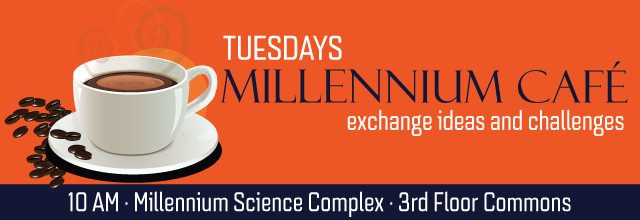
In the spirit of the Café, 45 students are competing for the top prize by pitching their research in two minutes or less. Topics range from clean water, nanoscience, medicine, energy, materials, and much more. This is a great opportunity to scout for new collaborations while enjoying a cup of coffee. The competition starts at 10:00 and will be setup similar to a poster session - this enables attendees to individually engage the competitors. Please be mindful of the judges as they need to evaluate every competitor in a short period of time. PPG has once again generously provided funding to enable this fantastic event.
